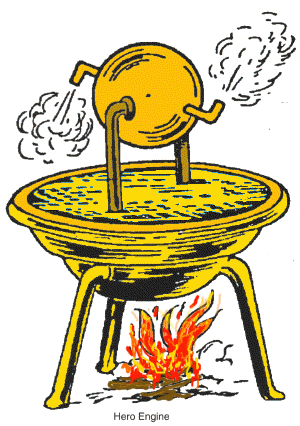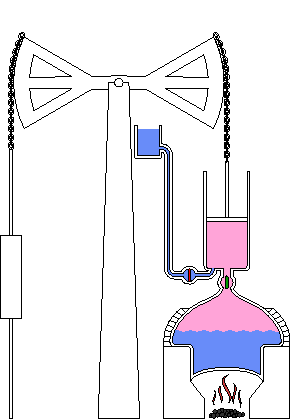The Invention
Hero's Engine (~ 50 A.D.):
 |
The earliest known application of using steam to produce mechanical work was developed
by Hero of Alexandria in the beginning of the first century.[3]
His apparatus was called the aeolipile (also know as Hero's Engine) and is illustrated on the right. The basic operation of the machine used a cauldron covered with a lid placed over a fire. Above the cauldron two bent pipes ran up to a ball that could rotate. Two more bent pipes were connected
to the middle of the ball and released steam directionally to apply a rotational force on the ball. The water boiling up through the ball being released through these pipes produced enough pressure to rotate the ball, thus converting steam to mechanical energy. [4]
